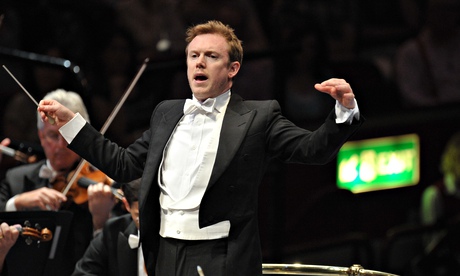
Bruckner's symphonies are often described as "cathedrals of sound", not merely because of their grandeur and scale but because of their quasi-architectural construction from blocks of musical material. But what happens when the construction of one of Bruckner's "cathedrals" takes place inside an actual cathedral? To judge from this concert, with the London Symphony Orchestra on one of their annual visits to play under the dome of St Paul's as part of the City of London festival, the results were unpredictable, intriguing and often moving, though with the building's 13-second reverberation time the listener often had less of a sense of listening to a live performance of Bruckner's Ninth Symphony than drifting through hazy memories of one.
The concert opened with Penderecki's Threnody for the Victims of Hiroshima, which sounded like a good idea on paper but came across as flat and dull. This was not, I hasten to add, a result of the playing but of the way the acoustics sapped the alternately biting and shimmering textures. Perhaps it should simply have been performed louder.
But when the Bruckner followed after a brief pause, the sense of musical space opened out immediately, sculpted by the wide intervals of the opening and their absorption into the first winding theme. By the time the strings found themselves soaring through the impassioned melody, the whole building had come alive, the sun moving round the great dome and settling on the statue of St Gregory.
Daniel Harding, on apparently his first visit to conduct in St Paul's, had evidently lost no time getting to grips with the acoustics because the performance was superbly paced. Indeed, it testifies to the mutual trust between Harding and the orchestra that the third movement, the most intimate and anguished of the three extant movements, was in many ways the most successful. The building seeming to welcome music that was after all conceived by its composer as a kind of prayer.
• Available on BBC iPlayer until 10 July.

